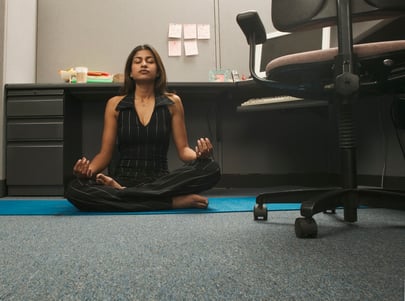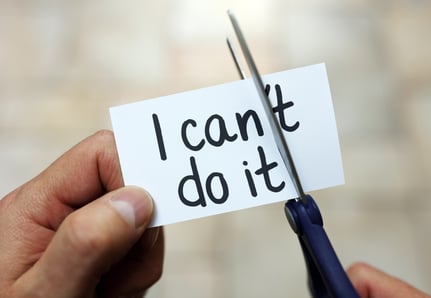 Daily stress can make you unhappy and irritated, which in turn affects your overall health. Meditation is a simple addition to your daily activities that can help improve your quality of life and put you in a more positive mindset.
Daily stress can make you unhappy and irritated, which in turn affects your overall health. Meditation is a simple addition to your daily activities that can help improve your quality of life and put you in a more positive mindset.
How Meditating Helps You Emotionally
Although you may feel like there is no time to meditate because of everything on your plate, it actually helps you become more focused and productive to get those things done and feel more calm while doing it. You can correct your thoughts from a more negative mindset to a positive one and understand why you feel the way you do.
Your mood will fluctuate and meditation can keep things on a more even keel to prevent anxiety. You can then handle outside situations that arise without feeling out of control. Just a few minutes a day will help reduce overall anxiety, stress, and even depression.
How to Get Started
Here is a step-by-step guide to start a simple meditation practice.
- Take a comfortable seat with your legs crossed and ensure your posture is proper.
- Place your hands in your lap with both palms facing up.
- Let go of tension in your back and soften your jaw.
- Keep your eyes slightly open.
- Focus all your thoughts on your breath. As you breathe in, imagine it is all positive blessings that surround your life. As you exhale, blow out all negative thoughts and distractions.
- Continue until you feel relaxed and peaceful.
Meditation doesn’t need to take a large chunk of time. Even 10–15 minutes daily can make a big difference in your health and wellness. Try it first thing in the morning to start your day off right, at the end of the day to de-stress, or in those moments when you feel the most overwhelmed—whatever works best for you!


 The second you tell yourself you can’t do something (without even trying), you are not even giving yourself a chance. It blocks you mentally from wanting to do something out of your comfort zone. When you have a negative thought of “I can’t” or “I won’t,” you aren’t even giving yourself the option to succeed at wellness or anything else.
The second you tell yourself you can’t do something (without even trying), you are not even giving yourself a chance. It blocks you mentally from wanting to do something out of your comfort zone. When you have a negative thought of “I can’t” or “I won’t,” you aren’t even giving yourself the option to succeed at wellness or anything else. 
 Ten years ago I decided to run my first half marathon. I have never been much of a runner, so I wanted to challenge myself. I went straight to my local department store and bought a new pair of shoes and hit the pavement. After a few weeks, I started to notice some knee pain. It got worse as I went into longer runs and eventually my back started getting the aches as well. When the pain became too much, I went to see my physician. His first reaction was for me to buy new shoes and a pair of inserts. Could this really be the only reason for my excruciating pain?
Ten years ago I decided to run my first half marathon. I have never been much of a runner, so I wanted to challenge myself. I went straight to my local department store and bought a new pair of shoes and hit the pavement. After a few weeks, I started to notice some knee pain. It got worse as I went into longer runs and eventually my back started getting the aches as well. When the pain became too much, I went to see my physician. His first reaction was for me to buy new shoes and a pair of inserts. Could this really be the only reason for my excruciating pain?